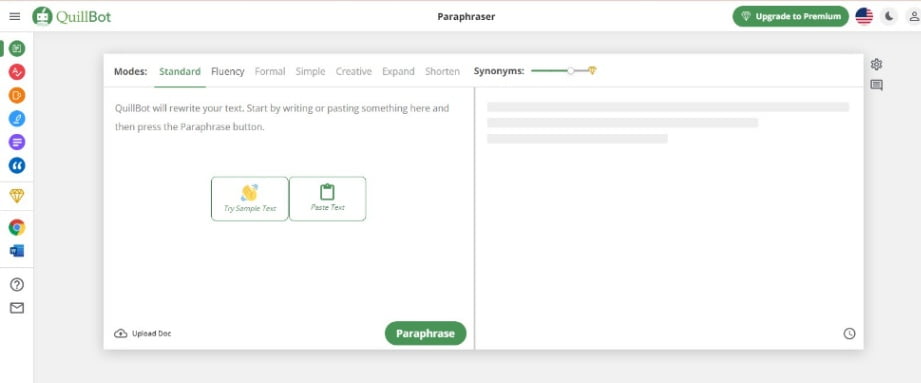Passive voice has a lot of bad PR. It leaves you wondering if it is that bad. Active voice, its twin brother, is the darling of every writing coach. They say it’s better-sounding and simple.
Contrary to popular opinion, passive voice has a lot of benefits. This is why you should know how to rewrite sentence in passive voice. Knowing this adds more dynamism to your writing.
Once you master the art of rewriting sentences in passive voice, you’re ready to tackle more complex stuff.

Difference Between Active and Passive Voice
Before delving deeper, let’s understand the difference between the two of them. Active voice refers to sentences where the subject (the performer of an action) performs an action.
On the other hand, a passive sentence inverts this structure. In a passive sentence, the object (receiver of the action) takes center stage, while the subject is introduced much later or not at all.
- Anna played the piano — Active
- The piano was played by Anna — Passive
- I drove the truck — Active
- The truck was driven by me — Passive
- She swept the floor — Active
- The floor was swept by her — Passive
Why Use Passive Sentences?
While passive sentences aren’t necessarily recommended for all writing projects, there are times when it is okay to use them. They can help you convey your message better.
1. Emphasize the Object
When you need to lay more emphasis on the object of a sentence, a passive sentence will be helpful. A passive sentence introduces the receiver of the action first. This difference shifts the attention of the readers and listeners to the object. It is the first thing they see and hear.
2. the Subject Is Obvious or Irrelevant
There are instances where the subject of a sentence is already obvious and doesn’t need to be stated. In such cases, we can use passive voice since the subject of a sentence isn’t a compulsory part of a passive sentence.
3. Retain Anonymity
You can use passive voice to retain the anonymity of the performer of an action. Story writers use this more often to heighten the suspense in their writing.
4. Increase Word Count
Due to the fact that passive sentences tend to be longer, people use them to increase the word count of their articles. Passive sentences tend to be longer than their active variants by at least two words.
How to Rewrite Sentence in Passive Voice
If you need to rewrite a sentence in passive voice, that means the sentence is already in active voice. At worst, you have a jumbled set of words to work with. First, let’s identify the compulsory elements of passive sentences. There are only two of them. They are:
- The recipient of the action, usually a noun or pronoun (the direct object of an active sentence)
- The verb (the action performed)
It’s crucial to note that you can’t change an active sentence that doesn’t have a direct object to a passive sentence.
The performer of the action (subject of an active sentence) is an optional element of a passive sentence. This means you may choose to include it or leave it out.
To rewrite sentence in passive voice, follow these steps:
- Identify the compulsory elements stated above.
- Switch the direct object to the initial position.
- Change the verb to its corresponding past participle form.
- It gets trickier here as you have to add an auxiliary verb, “be,” to the verb.
- Finally, you introduce the active subject using “by.”
This final step can be skipped if the subject is unknown or irrelevant. Let’s check a few examples:
Example 1: Professor Meaden taught the students. (Active voice)
- Direct object — the students
- Verb — taught
- Subject — Professor Meaden
The students were taught by Professor Meaden. (Passive voice)
Example 2: He is writing a resignation letter. (Active voice)
- Direct object — a resignation letter
- Verb — is writing
- Subject — he
A resignation is being written by him. (Passive voice)
AI Tools to Rewrite Sentences
If you need to rewrite any type of sentence, there are a number of AI tools to help you out. With these tools, you can write faster and more efficiently.
INK

INK has gradually grown to become a favorite AI tool for writers. It can instantly rewrite any type of sentence. Whether you’re trying to expand the sentence or simplify it, INK has you covered.
Users can enjoy INK’s rewriting capability in different ways. You can download the app on your computer or use the Chrome extension. The app allows you to create copies and articles using a distraction-free writing interface. To use the rewrite function on your browser, highlight the sentence and click the INK icon that appears. INK automatically generates different rewritten versions of the highlighted sentence.
If you want to identify passive sentences in your writing, INK has a tool dedicated to this. You only need to paste your text into the box, and INK will fish out the passive sentences therein.
Other Features
- Unlimited rewrites on the free plan
- Optimizes your headlines
- The editor optimizes content for SEO
- Over 120 writing tools
QuillBot

When it comes to rewriting sentences, QuillBot is one of the best in the business. It offers multiple rewriting modes and an easy-to-use interface. Users can access a couple of modes for free. However, only the premium plan grants access to all paraphrasing modes.
Other Features
- Microsoft Word and Chrome extensions
- Grammar and plagiarism checker
Grammarly

Grammarly is another quality tool to check for passive voice in your writing. This AI-powered tool checks content for other things like grammar, spelling, and punctuation errors. Grammarly can change passive sentences that contain the subject to active sentences.
Other Features
- Plagiarism checker
- Includes readability score
- Microsoft Word add-on
Conclusion
Passive voice has its benefits, and it is good to know when to use it. Variety is the spice of life, and it won’t hurt to find a few passive sentences among active sentences. If you want to limit passive sentences, an AI tool like INK can help you identify them.
Explore All AI Rewrite My Sentence Articles
Write Creative Article With Automatic Text Rewriter
A text rewriter tool takes your existing writing content and turns it into something new. These tools offer writers a…
How to Simplify Your Sentences for Better Clarity
Simplicity is the ultimate sophistication. This is why you should know how to simplify a sentence. Whether you’re a writer or…
Expand Your Text With Automatic Rewriting Tools
Text rewriting tools can make a world of difference for anyone involved in writing. It doesn’t matter if you’re a…
Passive Voice Sentence: Benefits and Rules
Passive voice has a lot of bad PR. It leaves you wondering if it is that bad. Active voice, its…
Advanced AI Tools to Automatically Reword Sentences
Well-written sentences are the foundation of any good essay. Whenever I want to reword my sentence professionally, there are two options.…
Key Tips to Better Rearrange English Sentences
If you find yourself in a situation where you need to rearrange the sentences in your essay, don’t fret. First,…
